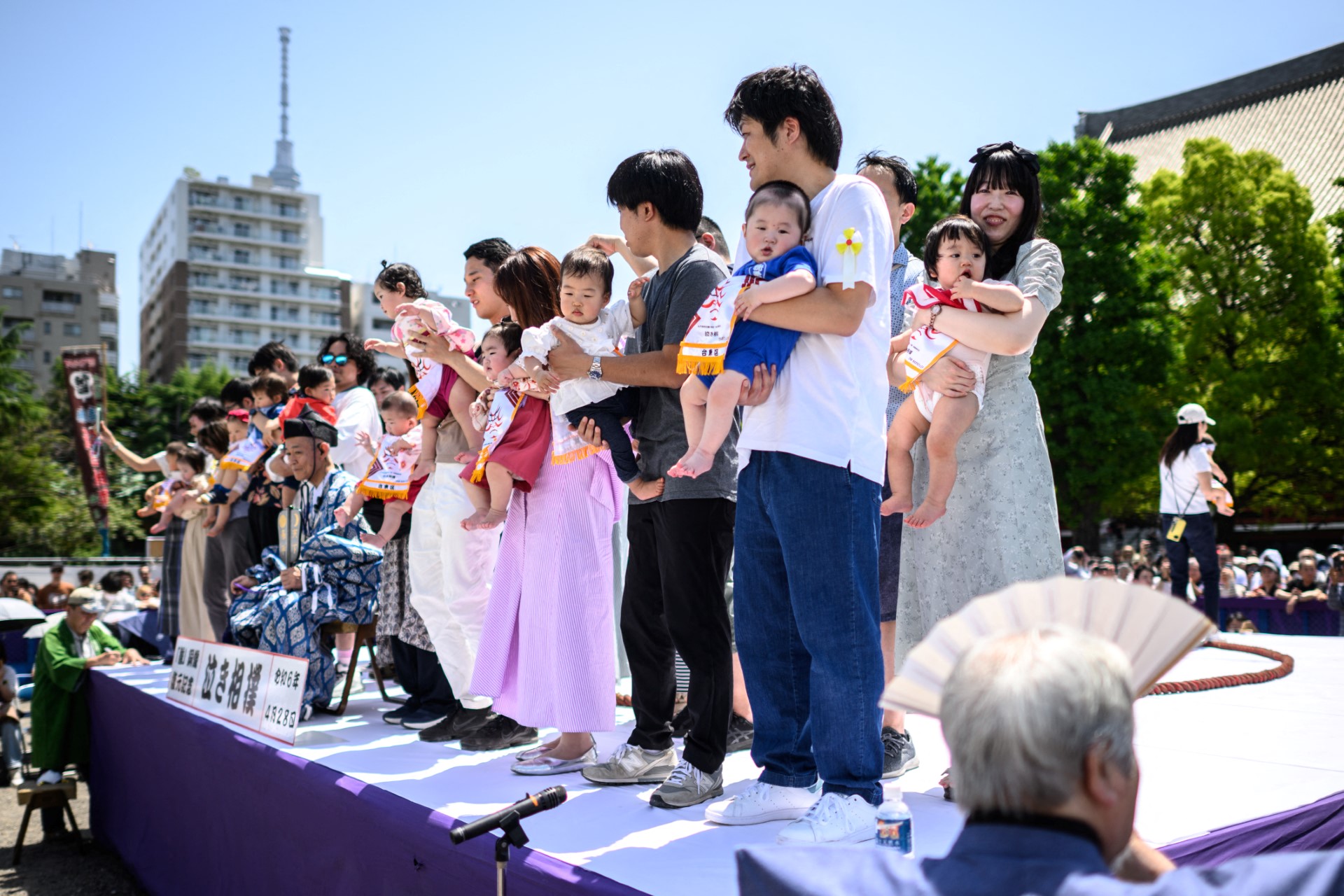
Japan’s fertility rate declined in 2024 for the ninth consecutive year, reaching another historical low that underscores the immense challenge facing the government as it attempts to reverse the trend in one of the world’s most aged societies.
The total fertility rate — the average number of children a woman is likely to have over her childbearing years — fell to 1.15, down from 1.2 the previous year, and marking the lowest rate in records going back to 1947, according to a Health Ministry release on Wednesday. The trend was particularly notable in Tokyo, where the rate was below 1 for the second year in a row.
The total number of births dropped to about 686,000, marking the first time the figure has fallen below 700,000. Deaths totaled around 1.61 million, leading to a net population decline of roughly 919,000 and extending the run of annual drops in the country’s population to 18 years. The data exclude migration.
ALSO READ: Japan's new births fall 9 straight years to record low in 2024
The data underscore the urgency of the government’s recent push to boost fertility. Prime Minister Shigeru Ishiba has rolled out a range of policies aimed at easing the financial burden on families, including expanded child-related subsidies and tuition-free high school education. The government has also guaranteed full wage compensation for some couples who both take parental leave and improved working conditions for childcare and nursing staff.
These measures build on the initiatives by Ishiba’s predecessor, Fumio Kishida, who pledged to raise per-child government support to levels comparable to Sweden, where 3.4 percent of GDP is devoted to family benefits. At the time, Kishida warned that Japan could “lose its capacity to function as a society” unless bold action was taken.
The crisis of rapidly declining birth rates remains unresolved, a Health Ministry spokesperson said, citing the shrinking population of young women and the trend toward later marriage and childbirth among key contributing factors.
READ MORE: Survey: Local leaders skeptical about Japan's efforts to halt birthrate decline
The continued decline in births is renewing concern over the future of Japan’s social security system. The nation’s public pension program is under increasing strain, with fewer contributors and a growing number of recipients. Over the past two decades, the number of people paying into the system has fallen by around 3 million, while beneficiaries have increased by nearly 40 percent, according to a separate ministry report.
Japan’s soaring social security costs are placing even greater pressure on public finances, where the debt-to-GDP ratio stands at the highest among advanced economies. For fiscal year 2025, social welfare spending totaled ¥38.3 trillion ($266.3 billion), accounting for one-third of the national budget.
The labor market is also expected to remain under pressure. If current trends continue, Japan could face a shortage of 6.3 million workers in 2030, according to an estimate by Persol Research and Consulting.
ALSO READ: Japan's fertility rate sinks to record low in 2023
Demographic challenges are increasing around the world. In South Korea, the fertility rate ticked up slightly last year for the first time in nine years, though only to 0.75. US births declined in 2023 to the lowest level in more than 40 years, a trend that likely led Donald Trump administration to consider a raft of childcare policies.
In a rare encouraging sign, the number of newlywed couples in Japan rose by more than 10,000 in 2024 compared with the previous year. Since marriage and birth rates are closely linked in the country, the increase may help support future fertility. Local governments, including in Tokyo, have recently launched initiatives to encourage marriage, such as developing dating apps and organizing matchmaking events to create more opportunities for people to meet potential partners.


